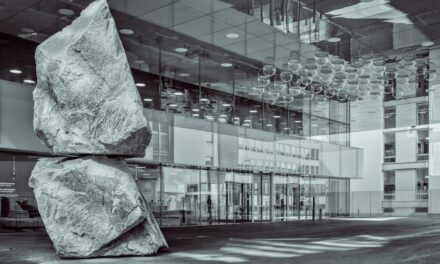Realism and abstraction represent two distinct yet interconnected approaches to art, each with its own philosophy and aesthetic. Realism, as an artistic movement, emerged in the mid-19th century as a reaction against the idealised forms of Romanticism.
Artists such as Gustave Courbet and Jean-François Millet championed this style, portraying scenes of rural life and working-class struggles with a raw honesty that resonated deeply with their audiences. The essence of realism lies in its commitment to truthfulness, capturing the world with meticulous detail and a sense of authenticity that invites viewers to engage with the subject matter on a personal level. In contrast, abstraction moves away from representational accuracy, prioritising form, colour, and emotional resonance over literal depiction.
This approach gained prominence in the early 20th century, with artists like Wassily Kandinsky and Piet Mondrian leading the charge towards non-representational art. Abstraction allows for a more subjective interpretation of reality, where shapes and colours can evoke feelings and ideas without the constraints of physical representation. The beauty of abstraction lies in its ability to transcend the ordinary, inviting viewers to explore their own emotions and interpretations.
By stripping away the familiar, abstract art challenges us to reconsider our perceptions and engage with the essence of what it means to create and experience art.
Summary
- Realism in art aims to accurately represent the visual world, while abstraction focuses on conveying emotions and ideas through simplification and distortion.
- The artist’s intention plays a crucial role in artistic expression, whether it is to faithfully represent reality or to evoke a specific emotional response through abstraction.
- Realism is chosen for its ability to capture details and provide a faithful representation of the subject, making it ideal for portraiture and still life.
- Abstraction has the power to convey emotions and ideas through simplification and distortion, allowing the artist to evoke a specific mood or concept.
- Balancing realism and abstraction can create impactful and thought-provoking artworks that combine the accuracy of realism with the emotional depth of abstraction.
The Role of Intention in Artistic Expression
The Realist’s Goal
An artist’s intention can stem from a desire to convey a specific message or evoke particular emotions within their audience. For example, a realist painter may seek to document social issues or capture the beauty of nature with precision, utilising their skills to reflect reality as they perceive it.
Abstraction as a Tool for Expression
Conversely, an artist who leans towards abstraction may have different intentions altogether. They might aim to explore the emotional landscape of human experience or challenge conventional perceptions of reality. In this context, abstraction becomes a tool for liberation, allowing artists to express complex ideas that may be difficult to articulate through representational means.
Understanding the Artist’s Intention
The intention behind abstract works often lies in their ability to provoke thought and inspire introspection, encouraging viewers to engage with the artwork on a more personal level. Ultimately, understanding an artist’s intention can provide valuable insight into their creative process and the choices they make between realism and abstraction.
Choosing Realism for Representational Accuracy
The choice of realism often stems from a desire for representational accuracy, where artists strive to depict their subjects with fidelity to life. This approach can be particularly powerful in conveying narratives that resonate with viewers on an emotional level. For example, portrait artists who focus on realism can capture the nuances of human expression, revealing the subtleties of character and emotion that might otherwise go unnoticed.
By meticulously rendering details such as skin texture, light reflections in the eyes, or the play of shadows across a face, these artists create a connection between the subject and the viewer that is both intimate and profound. Moreover, realism serves as a historical document, preserving moments in time for future generations. Artists like Edward Hopper have used realism not only to depict scenes but also to comment on societal issues such as isolation and urban life.
Through their detailed representations, these artists invite viewers to reflect on their own experiences and consider broader themes within society. The power of realism lies in its ability to evoke empathy and understanding, allowing audiences to engage with complex narratives that might otherwise remain hidden beneath the surface.
The Power of Abstraction in Conveying Emotion
Abstraction possesses a unique power to convey emotion that often transcends the limitations of representational art. By focusing on colour, form, and composition rather than literal representation, abstract artists can tap into the emotional core of their subjects. For instance, Mark Rothko’s colour field paintings evoke profound feelings through their use of vibrant hues and expansive canvases.
The viewer is invited to immerse themselves in the experience of colour itself, often finding personal meaning within the emotional landscape created by the artist. Furthermore, abstraction allows for a more universal language of expression. While realism may be tied to specific cultural or historical contexts, abstract art can resonate across boundaries, speaking to shared human experiences.
This universality enables viewers from diverse backgrounds to connect with the artwork on an emotional level, fostering a sense of community through shared feelings rather than specific narratives. In this way, abstraction becomes a powerful vehicle for exploring complex emotions and ideas that might be difficult to articulate through traditional representational means.
Balancing Realism and Abstraction for Impact
The interplay between realism and abstraction can create a dynamic tension within an artwork that enhances its impact. Many contemporary artists choose to blend elements of both styles, crafting works that invite viewers to navigate between the familiar and the unknown. This balance allows for a richer exploration of themes and ideas, as artists can draw upon the strengths of each approach to create multifaceted narratives.
For example, an artist might begin with a realistic depiction of a landscape before gradually introducing abstract elements that suggest emotional undercurrents or conceptual ideas. This fusion can also challenge viewers’ perceptions, prompting them to reconsider their understanding of reality and representation. By juxtaposing realistic elements with abstract forms, artists can create a dialogue between what is seen and what is felt, encouraging audiences to engage with their work on multiple levels.
This balance not only enriches the viewing experience but also reflects the complexity of human perception itself—where reality is often intertwined with emotion and interpretation.
Contextual Considerations in Choosing Realism or Abstraction
Influence of Cultural Heritage
For instance, an artist from a culture steeped in tradition may gravitate towards realism as a means of honouring their heritage and preserving cultural narratives through accurate representation.
Societal Factors and Artistic Expression
In contrast, an artist influenced by modernist ideals may find freedom in abstraction, using it as a means to challenge conventions and explore new artistic territories. Additionally, societal issues often play a significant role in shaping artistic choices. In times of political unrest or social upheaval, artists may turn to realism as a way to document struggles and advocate for change through their work.
Artistic Expression and Personal Inquiry
Conversely, during periods of introspection or existential questioning, abstraction may emerge as a preferred mode of expression—allowing artists to delve into personal emotions or philosophical inquiries without the constraints of literal representation. Ultimately, understanding these contextual considerations enriches our appreciation for an artist’s choices and the significance behind their work.
The Influence of Personal Style on Artistic Choices
An artist’s personal style is a crucial factor in determining whether they lean towards realism or abstraction in their work. Personal style encompasses an artist’s unique voice—shaped by their experiences, influences, and individual sensibilities—which informs their approach to creation. For some artists, this may manifest as a preference for meticulous detail and representational accuracy; for others, it may lead them towards bold experimentation with form and colour.
Moreover, personal style evolves over time as artists grow and develop their practice. An artist who initially embraces realism may later find themselves drawn towards abstraction as they explore new techniques or philosophical ideas.
By examining an artist’s journey through their personal style, we gain insight into how individual choices intersect with larger artistic trends.
Exploring the Boundaries Between Realism and Abstraction
The boundaries between realism and abstraction are not rigid; rather, they exist on a continuum where artists can navigate freely between styles. Many contemporary artists challenge traditional definitions by creating works that blur these lines—incorporating elements of both realism and abstraction into cohesive pieces that defy categorisation. This exploration invites viewers to reconsider preconceived notions about what constitutes art and encourages a more inclusive understanding of artistic expression.
In this fluid space between realism and abstraction lies immense potential for innovation and creativity. Artists can draw upon techniques from both realms—utilising realistic detail alongside abstract forms—to create works that resonate on multiple levels. This hybrid approach not only enriches the artistic landscape but also reflects the complexity of human experience itself—where reality is often intertwined with emotion, perception, and interpretation.
As we continue to explore these boundaries, we open ourselves up to new possibilities for understanding art in all its diverse manifestations. In conclusion, the interplay between realism and abstraction offers a rich tapestry for artistic expression that invites both creators and viewers alike to engage deeply with the world around them. By understanding these two approaches—alongside the intentions behind them—we can appreciate the myriad ways in which art reflects our shared human experience while challenging us to see beyond the surface into deeper emotional truths.
When deciding between Realism and Abstraction in art, it is important to consider the message you want to convey and the emotions you want to evoke in your audience. Realism captures the world as it is, while Abstraction allows for more interpretation and imagination. An interesting related article to this topic is Urban Calligraphy: Blending Traditional Lettering with Modern Vibe, which explores the fusion of traditional and contemporary art forms to create unique and expressive pieces. This article could provide inspiration for artists looking to experiment with different styles and techniques in their work.



